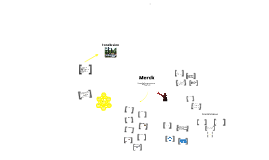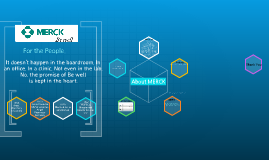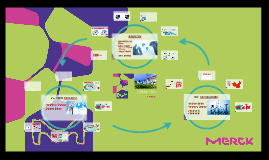Merck
Transcript: Humanitarian Argument UNAIDS estimated that in 1999 there were 34.3 million people worldwide living with HIV/AIDS, including 5.4 million newly infected that year. Of those infected, over 70% lived in Sub Saharan Africa. Complicated regimen Close medical supervision by HIV/AIDS specialists Severe side effects Did not work in all people Did not work indefinitely Cost: $8,000 - 15,000 per year Crixivan Cost: $4,500 per year ($12 per day) Our Mission The mission of Merck is to provide society with superior products and services – innovations and solutions that improve the quality of life and satisfy customer needs – to provide employees with meaningful work and advancement opportunities and investors with a superior rate of return. Our Values 1. Our business is preserving and improving human life. All of our actions must be measured by our success in achieving this goal. We value above all our ability to serve everyone who can benefit from the appropriate use of our products and services, thereby providing lasting consumer satisfaction. 2. We are committed to the highest standards of ethics and integrity. We are responsible to our customers, to Merck employees and their families, to the environments we inhabit, and to the societies we serve worldwide. In discharging our responsibilities, we do not take professional or ethical shortcuts. Our interactions with all segments of society must reflect the high standards we profess. “Medicine is for the people, it is not for the profits. The profits follow, and if we have remembered that, they have never failed to appear. The better we have remembered it, the larger they have been.” "We cannot rest until the way has been found, with our help, to bring our finest achievements to everyone” - George W. Merck Merck needs to implement a new strategy which allows the company to maintain the mission statement, but also allows the company to gain profits. Our Suggestion for Merck: Continue global strategy Emphasize comprehensiveness Modify to a more mechanistic structure To do this successfully, all elements of Merck'will need to adapt. Major Pharmaceutical company Created by: Executive Internal Strategy Team 62,000 employees -We are not doing what is best for growth in our shareholder's money Face dilemma with potential expenses 34.3 million people infected in 1999 Shared Values focus on both ethics and profits “Do no harm.” “If harm is avoidable, avoid it; if harm is unavoidable, minimize it.” - Fr Robert Spitzer Style senior managements focus Past Strategy River Blindness Process George W. Merck: “Medicine is for the people, it is not for the profits.” The Golden Rule “Do good” “Optimize the good.” “Do unto others as you would have others do unto you.” - Fr Robert Spitzer The donation of money or drugs only goes so far, we hope to improve the impact held by both through comprehensiveness Focus on the combination and synergy of outside efforts In the short term our efforts will be purely donated, yet in the long term, we hope to achieve profits The Silver Rule -Already spending money on one free drug for people, Where does it stop A Comprehensive Program We are a business, effieciency is a core competency, and we want to take advantage of this Widespread donation as with Mectizan is not feasible Will donate drug in first application to demonstrate program's abilities Corporate Level Strategies 3) Scientific excellence for needs of consumers 12% contribution to R&D Skills core competencies Key Ratios Affected Two Clashing Strategies Merck Research Driven Company General Framework Tool Corporate Level Strategies Conclusion 2) High standards of eithics and integrity Research Driven Company Staff increase # of employees increase # of divisons demographics change Black fly transmission Vision Merck's Objective: providing HIV/AIDS therapy to infected individuals Strategy: establish a way to be profitable while providing the HIV/AIDS therapy to those infected. Background Discovery of treatment Mectizan Donation vs. sell Humanitarian vs. profit Both have their respective advantages and disadvantages for Merck Cooperation of outside organizations Funding Infrastructural differences in foreign countries Balancing profit and aid intentions Apply what we know from the past R&D is huge part of the business Many complex diseases Can't become complacent since the environment is constantly changing Performance 1) Preserve and improve human life Combine both profit driven and humanitarian strategies Duty to shareholders, and duty to people Pharmacuetical companies have a unique opportunity to meet both demands Symptoms of River Blindness $40 billion in sales Treatment success -We are a for-profit company Mission Our Strategic Recommendation Statistics gathered from 1999-2001 Donation Systems information systems communication systems HR system Conclusion General Framework Tool Microscopic worm capable of producing millions of offspring -Affects our financial records negatively Origin of HIV

















